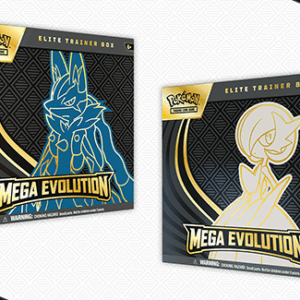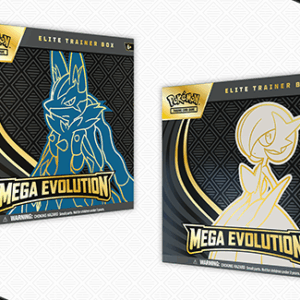Ah, the intriguing universe of Pokémon cards. A mesmerizing blend of nostalgia, artistry, and capitalism. In this colorful cardboard realm, the true aficionados are those who can differentiate between the subtle nuances of shadowless and shadowed base set Pokémon cards. Whether you’ve stumbled upon an old collection or are keen to dive into this captivating hobby, understanding the subtle distinctions between shadowless and shadowed cards could mean the difference between a fortune and just another card in your pile.
Let’s step back in time to 1999. Among the waves of cards that hit the shelves, three distinct versions emerged: First Edition, Shadowless, and Unlimited. Each carries its own tale of design and scarcity. The First Edition is often seen with a prestigious black stamp; Shadowless mirrors it but without the telling seal; and Unlimited, the most prolific of the trio, is distinguished by its shadowed design. The saga of these cards is not merely one of aesthetics; the differences hint at their chronological order of release, ultimately shaping their desirability in today’s market.
Imagine the shadowless cards like a minimalist artwork. These were early Base Set prints, aired with a no-nonsense frame around the Pokémon image. Devoid of any gray shadow, they maintain a sleek, two-dimensional appeal. It’s this shadowless quality that has collectors perking up their ears and scrutinizing their collections. At some point, likely inspired by a desire for depth or perhaps just to jazz things up, later cards adopted a soft, gray shadow adjacent to their artwork. This subtle tweak gave them a 3D appearance, birthing the beloved (or to some, notorious) shadowed Unlimited prints.
Understanding the timeline is a quick assurance in this world of shadows. First Edition is predecessor, always and forever shadowless. Followed by the lesser-known shadowless, then briskly giving way to the ubiquitous shadowed Unlimited editions. If you’re the kind that invests a more than healthy amount of your time examining these cards, you’ll note how the visual minutiae tell volumes about their worth and rarity.
Imagine holding these carefully crafted cards in your hand and noticing the distinctions. The picture frame: shadowless cards are flat, sleek, with no hint of the gray shadow whispering at the edge. By contrast, shadowed cards boast a soft gray shadow, lending them a manufactured prestige. The HP font is another clue—a thin, close-knit red on shadowless versus a robust, slightly more open typeface in shadowed cards. Slight, but profound for the trained eye.
One should not overlook border tone and ink as mighty indicators. Shadowless cards often wear a slightly paler yellow border; their ink seems less aggressive, possessing a softer charm. Unlimited versions can appear notably vivacious, with richer color saturation. Subtle, yet definite.
For text connoisseurs, the evolution box and attack text offer further enlightenment. Shadowless showcases exactly what its name implies—finer, more delicate text. The onset of the shadowed era brings with it a shift to a bolder, more pronounced typeface. Each word has its own gravity.
The copyright line is less paramount but remains a supporting player in this saga. Shadowless typically stays compact, sporting an early multi-year mark. The shadowed variants expand that format slightly.
Holo cards—a specific playground for observation. Here, the foil surface of a shadowless might just carry a unique print texture or a differing sheen. When shadowless and shadowed cards are laid flat together under the light, the contrasts become glaringly evident.
Boxes and packs tell stories of their own. Shadowless cards, crowning the early Base Set boxes, were fleeting on store shelves, whispering tales of rarity that extend to today’s collectors who often trace these rarer packs using box art and seal styles.
Pragmatic examples bestow clarity, especially with iconic figures. Take Charizard—First Edition Charizard, inherently shadowless with its seal of prestige. The shadowless without the stamp? Rare, but existing. Unlimited shadowed? The Charizard most of us clutched tightly in plastic sleeves back in the day.
Even the likes of defensively inclined Machamp play into the narrative, showcasing the shadowless layout in early editions, with later prints fitting comfortably into the shadowed mold. Oat fibers remain restless in old Pokémon collector albums with intermixed trainer and energy cards, each proclaiming its particular lineage.
For the meticulous grader, shadowless cards require more than just a peek. Their brief stay in the common sphere leaves them prone to the battle scars of old—a slight edge chipping, a faint scruff. Under bright light, these quirks become crystal clear, and the shadowless label transforms into a coveted accolade. Grading cards becomes a session of discipline, with alignment seen as an equal mystery, zealously imparting value to these cardboard kings.
Errors? Yes, they abound. Never be fooled by colloquial tangents like “shadowless Jungle” or “Fossil,” which belong strictly to the base chronicles. Beware of those seemingly intriguing UK variants touting a late “1999-2000” copyright—these remain shadowed in spirit.
A snippet on the go is always handy: watch for the missing gray bar, let HP text curl its way into your heart’s catalog, trace the ink and border with discerning romance, and firmly plant your findings within the base set domain.
In this realm of Pokémon card collecting, shadowless prevails as mystical lore—a tier straddled between dreams of First Edition grandeur and the ubiquity of Unlimited prints. Charizard, Blastoise, Venusaur—all sirens calling for cardholder’s affection and speculative pocketbooks alike.
Diligently sorting through your childhood collection, remember: shadowless carries a tale. Who knew the absence of a shadow could hold such sway? Each card, now grand and revealed under discerning eyes, possesses a narrative on rarity and desirability. That initial spark of childhood curiosity might just turn up an evolutionary treasure in your card bundle. As with every aspect of life involving nostalgia and value, the devil is indeed in the details—and here, it walks silently with shadowless footprints.






